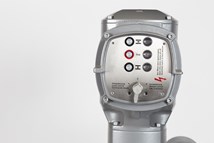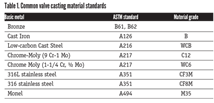Offshore Production in a Low Oil-Price Environment
Three years ago, The Washington Post published an article called Key facts about the great oil crash of 2014.
But offshore production is a complicated and expensive process that can not so easily adapt to the constraints of extremely low prices. The huge risks inherent in the offshore space do not change just because prices go down, so operators must figure out ways to balance cost-savings with safe, environmentally responsible maintenance and repair activities.
In an April 2016 article in Oil & Gas Financial Journal, Mike Neill of Petrotechnics in Houston described some of the challenges of operating in this environment. “Pressure is exerted to defer activities where possible, especially major events such as plant shutdowns and turnarounds, where the frenzied activities over a few days involve costly manpower and materials. The necessary downtime also results in lost production.”
According to Offshore Magazine, another major activity deferred by supermajor producers in the Gulf of Mexico, is exploration. The dollars being spent there are mostly limited to projects that have the highest potential for return. “Exploration budgets have been slashed and development and maintenance capital is making up the bulk of the capital spending in the coming years, with significant cost-cutting measures undertaken to maintain favorable economics on projects.”
Neill pointed out that there was one positive cost effect with the low oil prices; commodity prices also fell and still are relatively low even as oil prices are coming up off the bottom. Because suppliers, including valve manufacturers, reduced their prices to remain competitive, a low-price period could be a chance for operators with the necessary capital to do extensive work that might otherwise be delayed when production is at full capacity.
Generally, though, producers did not spend on extensive work, and mostly deferred that which could wait. But you cannot defer many maintenance and inspection activities without incurring the wrath of regulators and insurance inspectors, so the work must continue. Thus, offshore producers have had to become creative in the ways they assess what needs to be done to operate safely, as well as determine how many people are required to make that happen.
Technology Helps Cut Costs
To develop the fine art of cost-cutting, many producers have turned to technology, and VALVE interviewed Andrew Bartlett, Middle East SME Lead for Petrotechnics, to understand how that can be achieved.
In the past, when oil prices dropped, there was no access to the kinds of digital technology that now enable producers to visualize risk, prioritize backlog maintenance and spend the money on the items that could cause the most problems. And even though the technology was there when prices fell in 2014, it took some time for producers to adapt to change. “Fortunately,” he said, “Technology has now been brought to the front and can make the business smoother and stronger.”
Bartlett presented an example: When emergency shutdown valves are tested, there often are issues that indicate maintenance will be required soon. If an emergency shutdown valve is sticking, that would make emergency response less accurate. Maintenance must be performed, and orders would be put in the backlog, to be dealt with on the next scheduled maintenance run. But will that be soon enough? And what else is in the run? With a digital platform, producers can review the items in the backlog and specifically highlight those items in the risk view to visualize what’s happening. By doing so, management can make smart decisions and prioritize those items that need immediate attention.
“We’re seeing an uptick in the use of technology. If people can see their risk in virtually real time, then they can make better informed decisions.”
Lower oil prices have also influenced offshore staffing. “The one thing we saw in the North Sea when it got tight, the shift patterns that were normally 2-on and 3-off changed to 3-on and 3-off. Maintenance crews became smaller, so their work needed to be planned much more concisely.”
With technology, work can be planned in a timeframe of 60, 90 and 30 days or 2-week plans, 24-hour plans, whatever is needed. Work can now be planned based on production data and risk analysis, so essential work can be done with fewer people in the maintenance crews.
According to Barlett, the IIoT, or Industry 4.0, allows intelligent use of data that has been around for awhile. “What we can do now is make smarter use of the available data by only focusing on the things that are safety critical.”
The price of oil will continue to rise and fall with the vagaries of weather, politics and technological advances. However, by taking advantage of all available technology and using predictive maintenance tools, offshore producers can ride the waves of change and safely produce at optimal levels.
Kate Kunkel is senior editor of VALVE Magazine.
RELATED CONTENT
-
Back to Basics: The Nuts and Bolts of Torque and Tension
Torque is a force that causes an object to rotate, while tension is a force that causes an object to stretch or elongate.
-
The Rationale Behind Valve Characteristics
Back in the “early days,” we were taught that, to properly control flow, we should select a linear valve characteristic when the valve controls more than 25% of the piping system pressure drop at full flow.
-
Valve Selection for Bypass of Control Valves: A Case Study
A bypass line including a bypass valve is typically installed to provide continuous operation in case of regular maintenance of a control valve.







 Unloading large gate valve.jpg;maxWidth=214)


